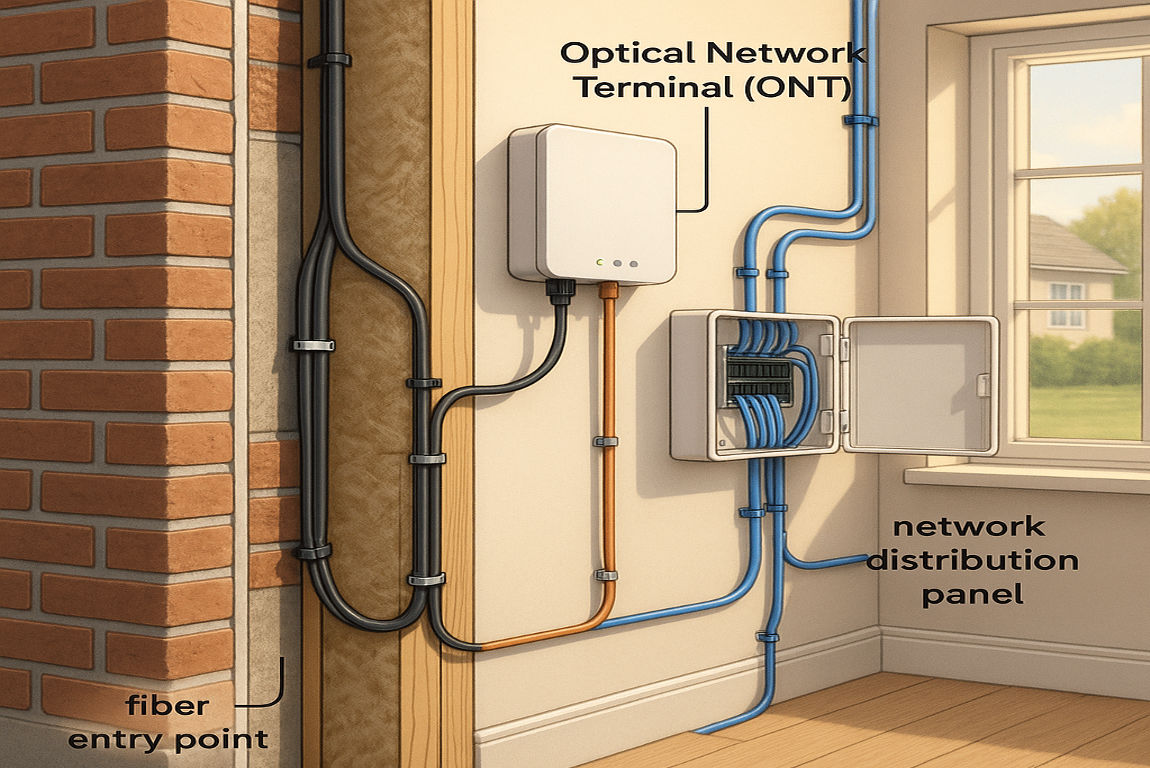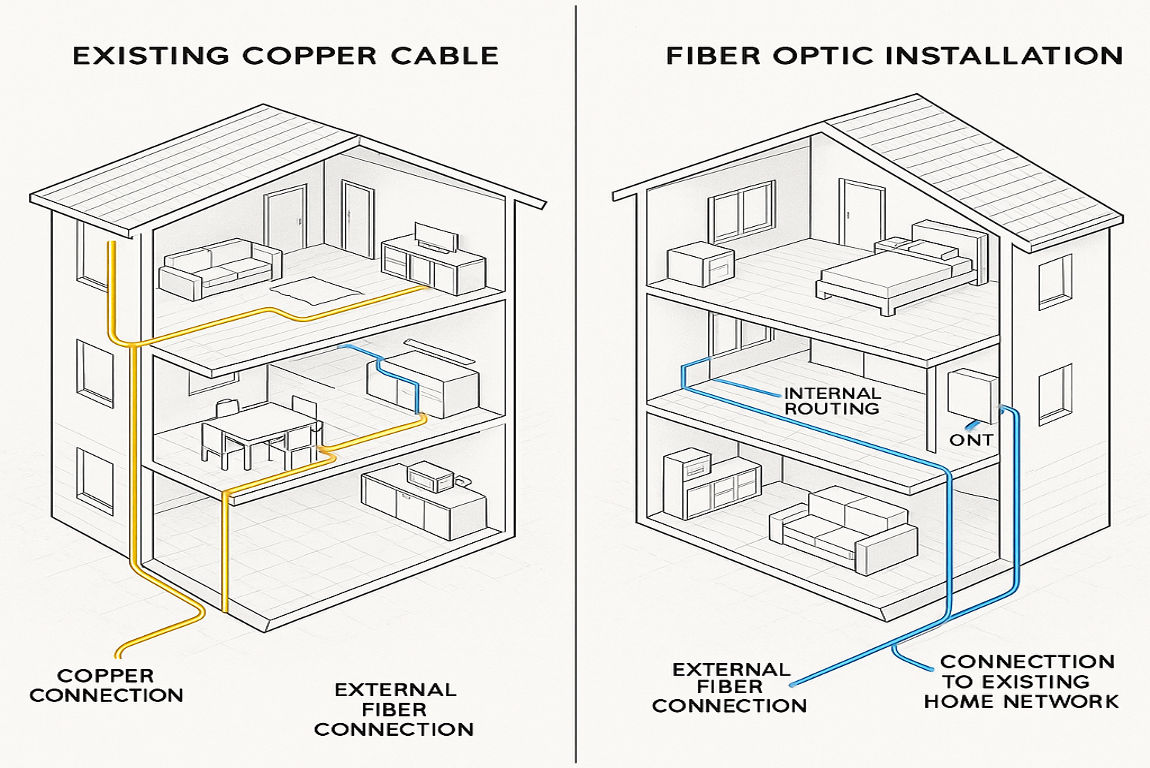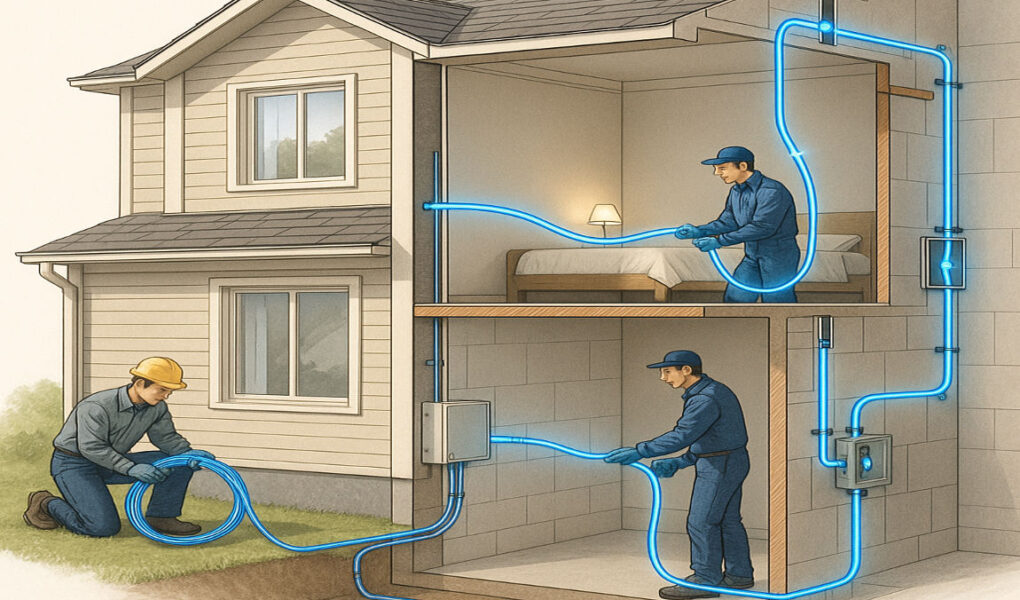Fiber optic internet is rapidly becoming the gold standard for home connectivity, offering unparalleled speed, reliability, and future-proof performance. As our digital lives demand faster downloads, smoother streaming, and seamless smart home integration, rewiring your home for fiber optic internet is a critical step to unlock these benefits. This guide will walk you through the essentials of rewiring your home, from understanding the technology and planning your network layout to installation and cost considerations. Whether you’re upgrading an existing setup or preparing a new build, pre-wiring with fiber optic cables ensures optimal coverage, eliminates dead spots, and supports the high bandwidth needs of modern households. Embrace the future of internet connectivity by learning how to properly wire your home to fiber optic internet and enjoy a reliable, lightning-fast online experience for years to come.
Understanding Fiber Optic Internet
Fiber optic internet uses strands of glass or plastic to transmit data as pulses of light. This technology allows for incredibly high speeds and greater bandwidth compared to traditional copper wiring.
The core principle is simple: light travels faster than electrical signals, which means that information can be sent more swiftly and efficiently. This results in reduced lag times and enhanced reliability.
With fiber optics, multiple users can connect simultaneously without experiencing a drop in speed, making it an ideal solution for households with high internet usage. Whether streaming movies, gaming online, or working from home, the advantages are clear.
This ensures a stable connection, even during peak hours when many devices may be competing for bandwidth.
Benefits of Switching to Fiber Optic Internet
Switching to fiber optic internet can revolutionize your online experience. Unlike traditional copper lines, fiber optics utilize light signals to transmit data, resulting in significantly faster speeds.
Imagine streaming your favorite shows without buffering or lagging. With fiber optic, you can enjoy high-definition content seamlessly across multiple devices.
Uploading large files becomes a breeze, too. Whether you’re working from home or sharing family videos, the enhanced bandwidth ensures everything transfers quickly and effortlessly.
Reliability is another key benefit. Fiber optic connections are less prone to interruptions caused by weather or electrical interference. This means more stable service for your daily needs.
This feature is handy for gamers and content creators who require fast uploads as much as downloads.
As more households adopt innovative technology, having a robust internet connection, such as fiber optics, positions you well for future advancements in connectivity.
You may also read (can you run electrical wire next to house plumbing safely).
Assessing Your Home’s Wiring Needs
Before diving into the rewiring process, take a moment to assess your home’s existing wiring. Understanding what you have is crucial in determining if a complete overhaul is necessary.
Start by inspecting your current network setup. Look for any outdated cables or equipment that may hinder performance. If you’re using copper wires, they might not be suitable for fiber optic systems.
Next, consider where you want to install the fiber optic connections. Are there specific rooms that need stronger internet access? Mapping out these areas will help identify the amount of additional wiring required.
Don’t forget to consider potential obstacles, such as walls and floors. Knowing their material can influence installation methods and materials needed for proper integration with new technology.
Tools and Materials Needed for Rewiring
When rewiring your home for fiber optic internet, having the right tools and materials is crucial. Start with a fiber optic cable that matches your internet service provider’s specifications. This is essential to ensure optimal performance.
Next, gather connectors and adapters explicitly designed for fiber optics. These components help link cables securely without signal loss.
These will help ensure the cables are adequately prepared for installation.
An optical power meter can also be handy; it allows you to test signal strength after installation.
Don’t forget protective gear, such as gloves and safety goggles—safety should always be your top priority when working on electrical systems. With these items at hand, you’ll be well-prepared to tackle your rewiring project efficiently.
You may also read (wire your own house a step by step guide).
Step-by-Step Guide to Rewiring for Fiber Optic Internet
Start by planning your layout. Identify the location where the main fiber optic line enters your home and map out the path to your router. This ensures a smooth flow of data.
Next, gather all the necessary tools. You’ll need fiber optic cables, connectors, a fusion splicer or cleaver, and safety gear like gloves and goggles. Having everything on hand makes the process seamless.
Begin with installing wall plates at your desired locations. Drill small holes for cable passage through walls if needed.
Feed the fiber optic cables through these openings carefully, avoiding sharp bends, as this can cause signal loss.
Once connected to the router, test each connection with an optical power meter. Ensuring that every link is functioning optimally is crucial before sealing up any walls or panels again.
Keep track of connections meticulously in case you need to troubleshoot later on—this will save time down the road.
Troubleshooting Common Issues
When making the switch to fiber optic internet, it’s common to encounter some hiccups along the way. Knowing how to troubleshoot these issues can save you time and frustration.
One frequent problem is signal loss. If your connection seems slow or drops frequently, check for physical damage to the cables. Ensure that all connections are secure and properly terminated at both ends.
Older routers may not be able to handle the high speeds offered by fiber optics. Upgrading your router could significantly improve performance.
If you’re experiencing connectivity problems in some regions of your home, it may be due to poor Wi-Fi coverage rather than a wiring issue. Consider using Wi-Fi extenders or strategically placing access points throughout your house for improved signal distribution.
If you’ve completed rewiring but still face difficulties, don’t hesitate to contact your service provider’s technical support team. They can provide valuable insights tailored specifically for their network setup.
By staying informed about potential challenges and knowing how to address them promptly, you can experience a seamless transition into the world of fiber optic internet, thereby avoiding unnecessary delays and frustrations.
You may also read (understanding gas usage in your home a complete guide).




